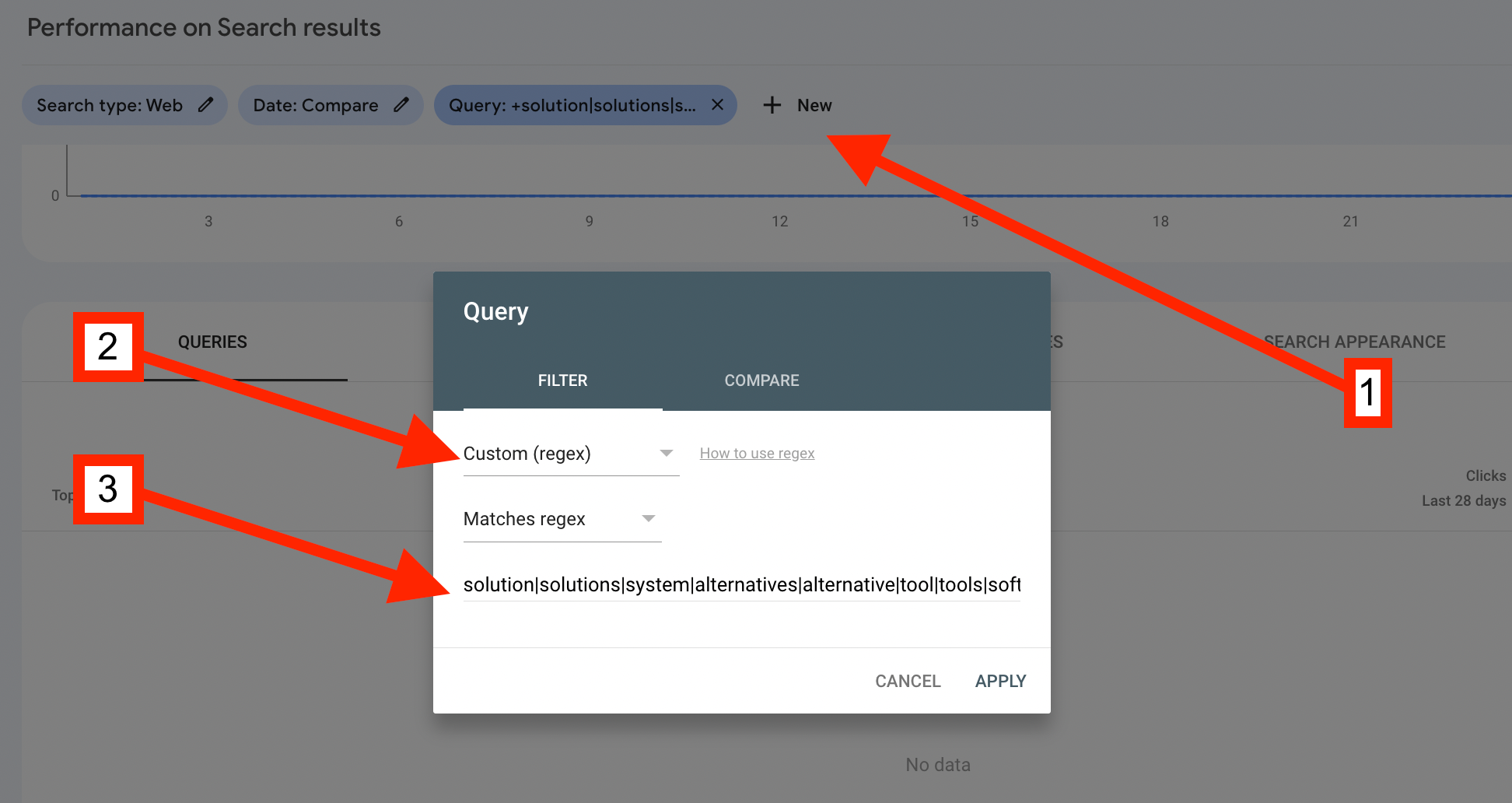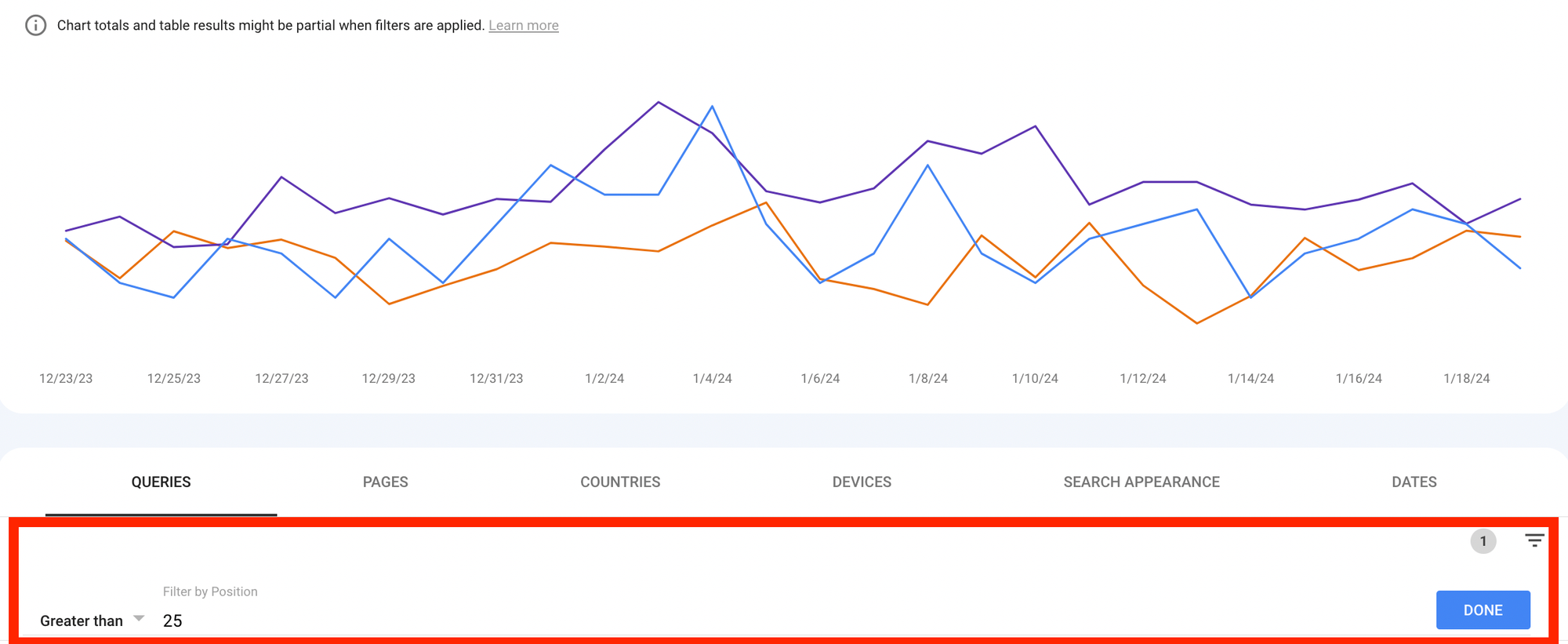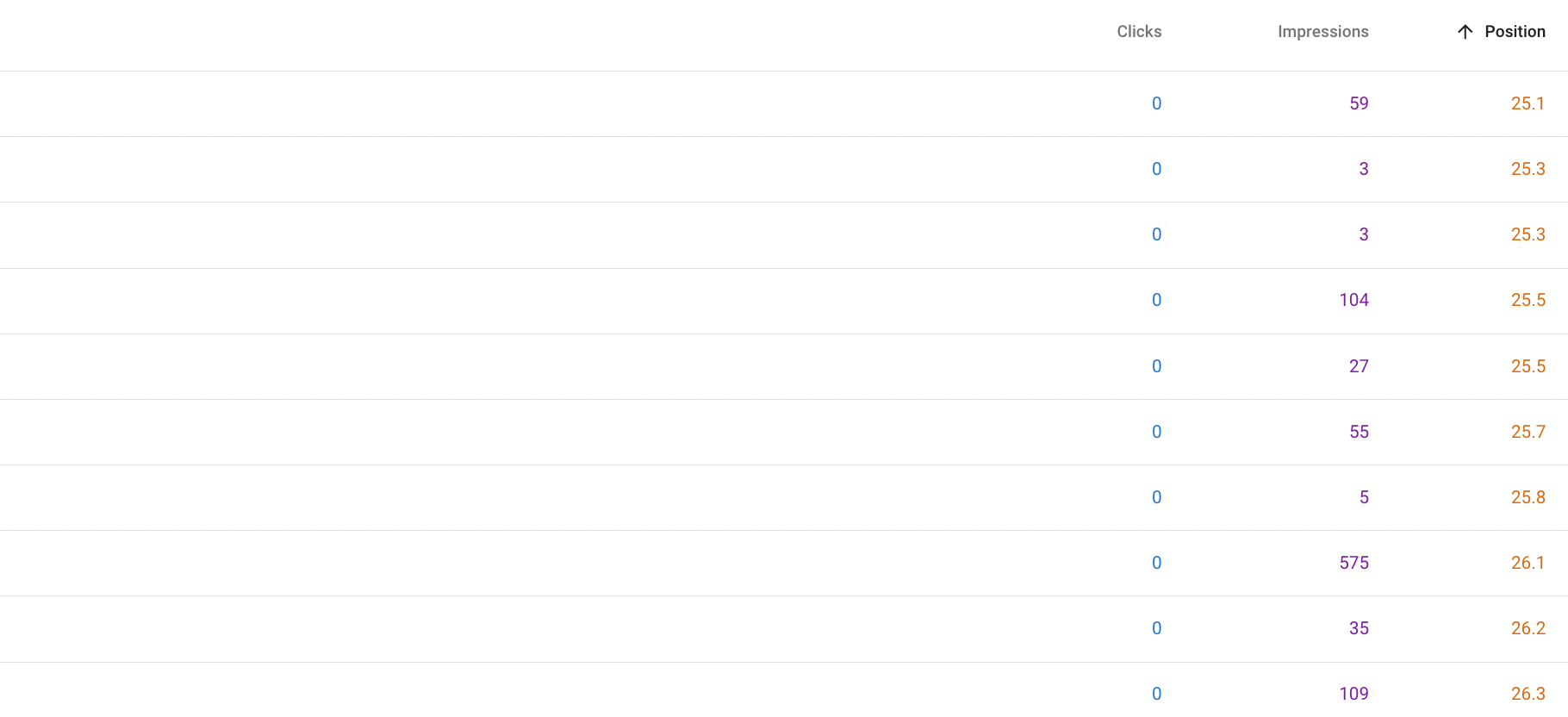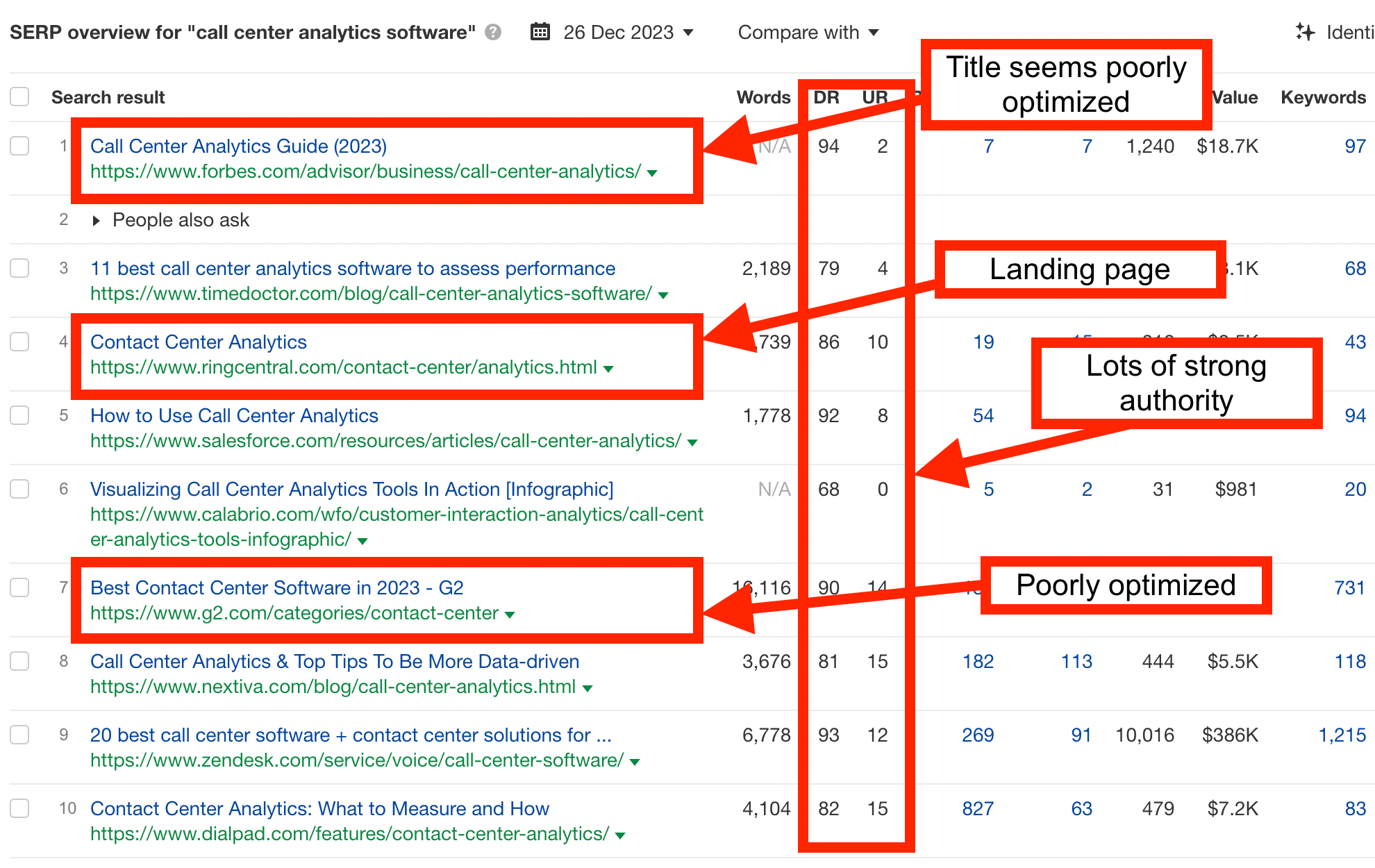A quick weekend tactic to unlock more growth.
Google Search Console is one of my favorite keyword research tools.
It shows the most accurate data on search volumes (and often shows keywords Ahrefs/Semrush haven't even picked up on).
It's also your data. It's not publicly available. So, it's an advantage your competitors don't yet have.
Let me show you how I use it.
Finding High-Converting Keyword Opportunities With Search Console
The ultimate goal for most SEO strategies is to win keywords that indicate the searcher has "commercial" intent.
Terms like "best marketing software" and "best Hubspot alternatives", or for affiliate sites terms like "La Creuset dish review", all show the searcher is pretty close to making a buying decision—a very desirable state to talk to them in.
In this short tutorial, we'll find more of these "lower-funnel" keywords that you could target in new content.
Step 1 - Filtering for lower-funnel modifiers
The first step is to find all the lower-funnel keywords for which your site is currently getting impressions for.
Head to Search Console and add a Customer (Regex) query filter for all the lower-funnel keyword modifiers you can this of, like this:

Step 2 - Find queries you're not ranking well for
Add these filters:
- Date: Last 28 days
- Position: Greater than 25

This will show all the lower-funnel keywords you're getting impressions for BUT the article is in position 25.
Why position 25?
Well, often your blog posts receive impressions for keywords that are related but not quite aligned enough for the blog to actually rank well/win for that keyword.
For example, imagine you have a blog titled "How to Analyze Feedback in 2024". It's likely to rank really well for anyone searching for "feedback analysis" or "how to analyze customer feedback". But it's also likely to get impressions on the keyword "Best Feedback Analytics Software" due to the close association between the two topics—even if it ranks in position 50 for that keyword.
I find that position "greater than 25" is a pretty good way to weed out any poor performers and focuses you on keywords where there simply isn't any relevant content yet.
Step 3 - Sift manually for opportunities
Start by sorting the queries by position to give some sense to the list.

If you want to find higher volume queries, you can also add a filter on "impressions". For example, to start with I only wanted to look at queries with more than 100 impressions in the past month.

Now, you simply need to go through this list manually and sift for opportunities.
Here's my process:
- Look for keywords that are highly relevant to your product/services
- Click on the query
- Look at the page that received the impression
- Ask yourself: does the intent of this page align with the intent of the query (e.g. if the query is "best feedback analysis tool" and the page is "how to do feedback analysis" then the intent is not aligned).
- If the answer is "no". This is an opportunity. It's a lower-funnel keyword that you don't currently have content for.
- Make a list of these in a Google Sheet (make note of the impression count in another column).
Step 4 - Verify the difficulty of your queries
Now you've got a list of lower-funnel keywords that are relevant to your product, head to your keyword research tool (e.g. Ahrefs/Semrush).
We want to verify how competitive and hard-to-win they are.
First, look at search volume.
Remember, you have the real data. So, if when you put it into Ahrefs it says there's zero volume...this is GREAT. Nobody else will likely have written about it.
Next, look at the SERP for the keyword.
Does it look like strong sites have this covered?
In the example below, I'd write this despite all the DR 90+ in the SERP. Why? Because hardly any address the right search intent.

Someone searching "call center analytics software" wants analytics specifically, not just "call center software" which sites like G2 are offering.
For this particular keyword, experience also tells me that a product listicle (e.g. "5 best call center analytics software") would best serve the audience in their commercial research stage, not a singular landing page.
Only the result in position three gets these things right. The rest are weak.
So, I think even a lower authority site has a chance (especially if the article is high quality and supported by link-building efforts).
Step 5 - Do the whole list
Move through your list and assess each of the opportunities available.
It can be time-consuming. But it's REALLY worth it to find these hidden, high-converting gems.
Hope you have an excellent Sunday.
—Benny
More from me:
- Learn to build your scalable content machine here.
- Dive into my library of 40+ fast-growth SEO case studies from 2023.


